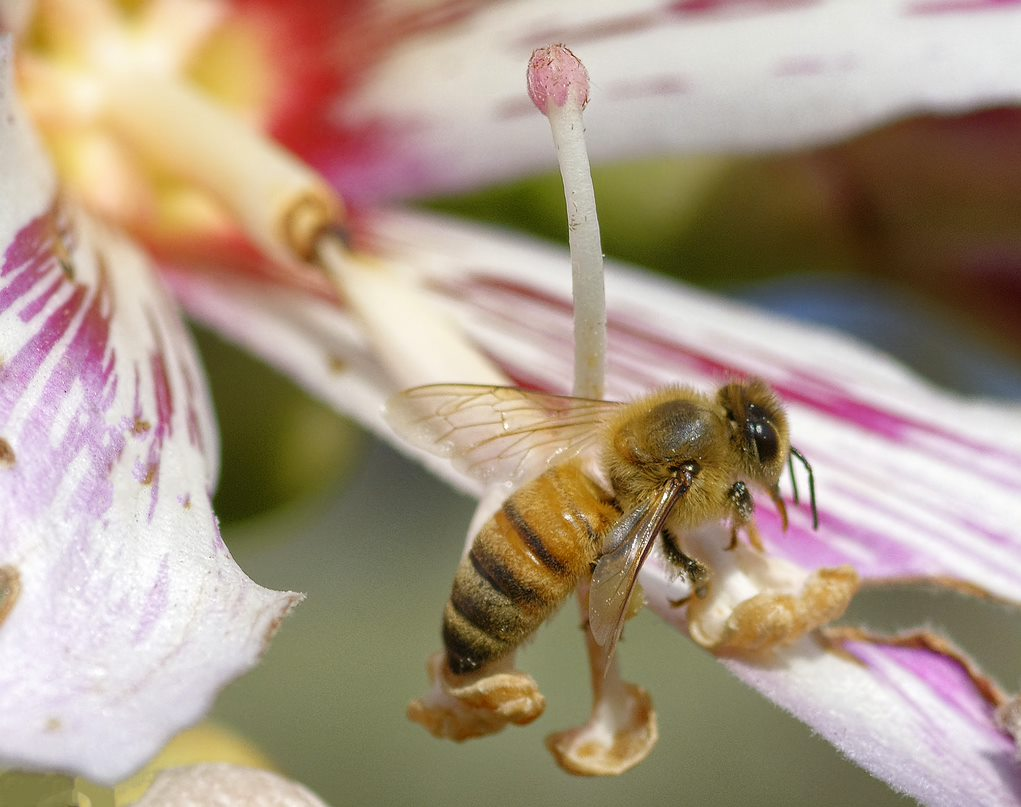
Emblazoned on buttons, T-shirts, and signs, “Save the bees!” seems an easy and universal cause to get behind. Bees have captivated us throughout time. The Greeks considered honey the nectar of gods. Marx evoked them in his theories on capitalism. Shakespeare’s Henry V extolled their orderliness. They buzzed about in the writings of Beatrix Potter and took center stage in The Bee Movie.
It’s no wonder there are campaigns to protect these insects, which are under assault from habitat loss and pesticides. But the fight for awareness focuses on just one type of bee, the honeybee — the same species heralded in literature, religion and philosophy. Yet, did you know that while there are only about seven species of honeybees, there are more than 16,000 species of bees worldwide? Understanding the difference between honeybees and native bees, their roles on Earth, and what we can do to support them will allow all bees to prosper.

The family Apidae is where bees of all sorts are classified, separating them from wasps and ants. A portion consist of what we commonly call honeybees; they are hive-thriving, swarm-gathering, honey-producing bees with very social behaviors, which is not typical Apidae behavior. We call other bees solitary bees or native bees, and they comprise most of our local bee population. It’s these bees that we should be yelling to save.
Here is why: Whereas many honeybees are domesticated by beekeepers and the agriculture industry to provide bee products and act as mass pollinators, native bee populations are dwindling due to habitat loss or destruction, even though they are arguably better pollinators than honeybees. They are solitary, finding their homes in more secluded and natural spots.

Many solitary bees have close and dependent relationships with plants. Take, for example, the squash bee, Peponapis pruinosa, which solely pollinates cucurbits such as pumpkins, acorn squash, and watermelon. Another example of this specificity is the vanilla orchid, Vanilla planifolia and its natural pollinator, the Melipona bee. Native from Mexico to Argentina, the Melipona bee is one of the few natural pollinators of the native vanilla orchid. When grown outside its natural region, as is popularly done in Madagascar, Tahiti and elsewhere, the vanilla orchid must be hand-pollinated.
Many times, these unique relationships are overlooked for the sake of mass production. While honeybees support the agriculture industry, their movability and borderline monoculture make them more susceptible to threats such as pesticides and blights, not only threatening their hive but also the farms that so heavily rely on them. Solitary bees, on the other hand, do not bring back fungus or other threats because they don’t have a hive. Moreover, the amount of pollen solitary bees encounter and disperse is two to three times more productive than that of the honeybee.

These special relationships between native bees and local habitats are what keep our biodiversity just that — diverse! Honeybees target flowers that help support their hive, not necessarily taking on the essential role that native bees provide when visiting or pollinating locally in backyard gardens, National Parks and preserves, and Naples Botanical Garden. They do a lot of work but don’t get their fair recognition.
How do we help them? By choosing the right plants! You can support native bees by planting native or regionally appropriate plants that require less pesticides and maintenance. Take it one step further by choosing plants with bloom times throughout the year, as these will encourage and feed bees year-round. You can also help by avoiding an overly manicured yard. Solitary bees nest in natural crevices, undisturbed soil, and hollow plants like bamboo and reeds, so consider leaving some areas intact to welcome bees. Remember, solitary bees don’t have a hive to defend, so they’re less aggressive than the social bees.
National, state, and local educational or scientific institutions, such as universities, botanical gardens, and plant societies have valuable resources regarding plant choices and native bees. Educating and sharing your knowledge with fellow gardeners also helps. A collective effort is more effective in “saving the bees!”
Here are some suggested links if you’d like to promote bees in your neighborhood:
Attracting native bees to your Florida landscape
Perfect plants for pollinators
 About the Author
About the Author
Kiva Talty is the Education Operations Manager at Naples Botanical Garden. While she isn’t a local, she enjoys experiencing the cultures, foods, craft beer, and festivals Southern Florida has to offer. She has a rambling spirit, and you might find her car camping while enjoying the landscapes of Florida that never cease to awe and surprise her.

